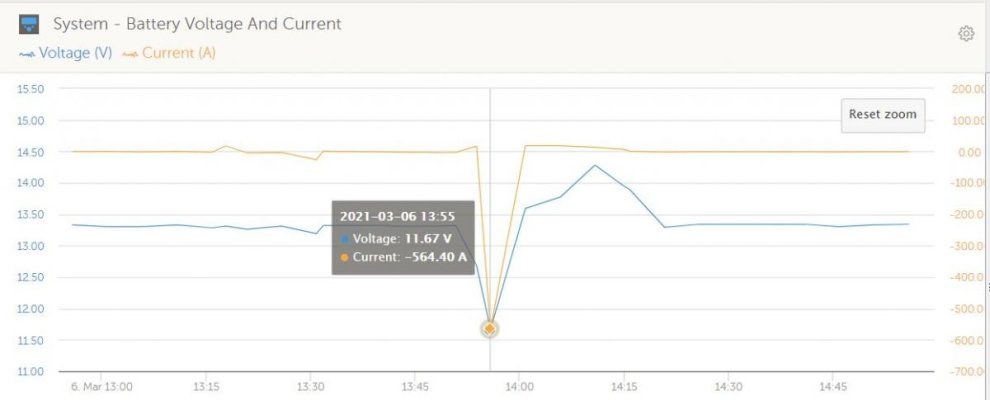jefndeb
Guru
Wow, they were NOT kidding,
I was reviewing my electrical data yesterday using the Victron Portal after a short 3 hour trip (to see how my new alternator regulator was doing) and I ran across this deep current demand...
564 amps?....wow, I better be more careful using those monsters...the battery temp went up 3 degrees in 10 seconds.
I didn't know where that came from until I realized that I was docking the boat at 13:55
I was reviewing my electrical data yesterday using the Victron Portal after a short 3 hour trip (to see how my new alternator regulator was doing) and I ran across this deep current demand...
564 amps?....wow, I better be more careful using those monsters...the battery temp went up 3 degrees in 10 seconds.
I didn't know where that came from until I realized that I was docking the boat at 13:55


